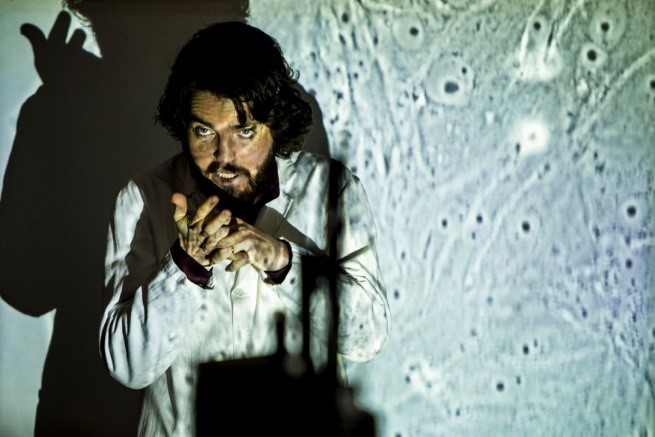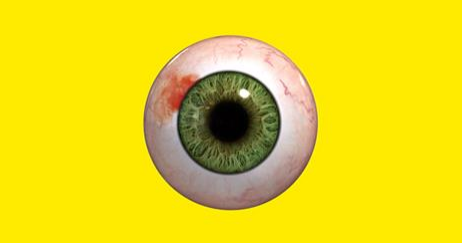Foucault: Biopower, Utopia and Race
Foucault developed his theory of biopower as part of his attempt to explore the ways in which the exercise of power over individuals and communities changes from pre-modern and medieval times through the Renaissance to the period of modernity. This new model of power begins to emerge gradually during the seventeenth century, a period marked by a gradual shift of emphasis within political economy, from a concern on how the sovereign should rule over their domain to questions about how they will secure the security of their people. The decline of feudalism and the gradual emergence of the centralized, administrative nation-state leads to a need to protect the population from outside forces and thus to an increasing emphasis on a more benign yet no less effective form of power characteristic of modernity. In pre-modern periods, power resided with the sovereign who could decide over the life and death of their subjects; it was a power relying on instilling fear of death – what Foucault refers to as “thanatopolitics,” the politics of death, “a technology of spectacular and extraordinary physical violence,” in Mark G.E. Kelly’s words, whereby “people were kept in check primarily by sudden, ad hoc interventions by the sovereign.”1 Since the seventeenth century, however, this “power over death,” Foucault writes, “now presents itself as the counterpart of a power that exerts a positive influence on life, that endeavors to administer, optimize, and multiply it, subjecting it to precise controls and comprehensive regulations.”2 This is a “bio-power” that is “situated and exercised at the level of life, the species, the race, and the large-scale phenomena of population”3, one that operates through a network of institutions, such as the family, schools, the police, prisons, hospitals, or asylums, among others. When Foucault introduced the term in the last of his lectures at the Collège de France of 1975-6, he identified a set of historically-specific developments in seventeenth-century Europe that were formative to the consolidation of biopower: new policies of intervention in birth rates and public hygiene; management of epidemics and common diseases; measures to coordinate medical care; and mechanisms of insurance for accidents and old age. These practices and policies are fundamentally biopolitical insofar as they represent “strategies for intervention upon collective existence in the name of life and health.”4 As Rabinow and Rose explain, “the birth of biopower in modernity marks the point at which the biological life of subjects enters politics and belongs entirely to the State.”5
Biopower, according to Foucault, consists of two dimensions, two poles of development that focus on the individual and the social body respectively. The first pole emerges in the seventeenth century and refers to the “anatomo-politics of the human body,” a power whereby the human body is seen “as a machine: its disciplining, the optimization of its capabilities, the extortion of its forces, the parallel increase of its usefulness and its docility, its integration into systems of efficient and economic controls.”6 The second pole develops during the second half of the eighteenth century and concentrates on the “bio-politics of the population” as it focuses on “the species body, the body imbued with the mechanics of life and serving as the basis of the biological processes: propagation, births and mortality, the level of health, life expectancy and longevity.”7 This power concentrates on enforcing not discipline but security and it operates not through the exclusion but through the management of populations.
These two different poles converge during the nineteenth century and particularly during its second half, in a process that determines two interrelated developments that are formative to the relations between utopianism and the biopolitics of race. On the one hand, there is the emergence or development of a set of (pseudo)scientific discourses central to the operation of biopower, such as statistics, evolutionary biology and degeneration theory, socio-biology and eugenics, among others. This is formative to the crystallization of the modern sense of “race” as both a biological species and an ethnic group, a sense serving as a discursive mechanism aimed at fragmenting, classifying and monitoring the field of the biological. It is in this sense that “[r]ace, together with health, and in variable relations to it, has been one of the central poles in the genealogy of biopower.”8
On the other hand, during this period there is a resurgence of interest in utopian writings in a revival of the genre in popular fiction which is marked from previous iterations precisely in its interest in ideas of racial purity and the centrality of eugenics in the ideal State. Science and fiction, utopianism and race – these are the four elements that shape the legacy of that period to which Utopia is indebted and to which it responds. The following section introduces and discusses the Kelly's TV series even as it returns to important moments in the genealogy of the relations between utopia and the biopolitics of race that help illustrate Utopia’s positioning towards these relations.
Biopolitics, Viral Apocalypse and Utopia on Television Drama: Dennis Kelly’s Utopia
Utopia follows a group of fans of a cult graphic novel titled The Utopia Experiment, whose vision of an impending viral apocalypse inflicted by the “Janus” virus turns out to be a real-life conspiracy orchestrated by a shadowy organization called the Network. Janus was engineered by geneticist Philip Carvel (Ian McDiarmid; Tom Burke) while he was working with the Network in the 1970s and it is designed to sterilize a large percentage of the human race in order to tackle global overpopulation. The purpose of Janus is therefore not the extinction of the human race but in its very survival; as far as the Network is concerned, their project is aimed more at preserving life than inflicting death. Their project is thus indebted to a model of power that relies not “on the right to take life or let live,” which was the right of sovereignty, but on “the right to make live or to let die” which is the right of biopolitics.9 The Utopia Experiment is thus indebted to “the economy of contemporary biopolitics” that “operates according to logics of vitality, not mortality.”10
Other narrative threads of the series exploring issues such as the containment of epidemics or the weaponization of disease turn out to be only part of a wider interest in further biopolitical themes and concerns, which are introduced through subplots about unexpected pregnancy, infertility and artificial insemination, through graphic scenes of physical torture and corporeal violence, and through backstories of childhood trauma and psychological shock. Lorna Jowett’s discussion of the series provides a comprehensive mapping of the biopolitical space within which the narrative of Utopia unfolds:
Medical testing and experimentation, corporate domination, anxieties about surveillance, nervousness about a global pandemic, projections about overpopulation and taxing our planet’s resources all feature in the conspiracy narrative. The show stops short of making any overt connection between the availability of fertility treatments (integral to one character’s subplot) and widespread overpopulation, leaving the viewer to ponder the blurring of public and private concerns in the contemporary politics of reproduction.11
The arguments proposed by Network members in support of their project only underscore the importance of biopolitics in the series’ visions of apocalypse and utopia. When three of the main characters, Becky (Alexandra Roach), Wilson (Adeel Akhtar) and Ian (Nathan Stewart-Jarrett) capture a member of the Network named Letts (Stephen Rea), they interrogate him on the assumption that the Utopia experiment is a eugenic project and that Janus is designed to target one specific race. Letts begins to confess:
[Carvel] wasn’t talking about race. He was talking about survival! We’ve now passed seven billion on this planet. When I was born, it was a little over two. Food prices are rising. Oil is ending. When our resources end in 20 years, given everything that we know of our species, do you really think we're going to ‘just share’?... Janus affects 90 to 95% of the population, leaving only one in 20 fertile. We predict the population will plateau at 500 million in just under 100 years. By then, normal breeding rates should resume but on a planet that will feel empty.
The management of populations is therefore the major motive driving the project of the Network, a centrality that highlights the pervasiveness of biopolitics in the utopian discourses informing the narrative: the very concept of “the population” itself is a discursive construct that did not exist before the emergence of modern biopower. As Mark G.E. Kelly explains, population is “constituted by biopolitics: there is no ‘population’ in the modern sense before biopolitics. Population only appears as such in the eighteenth century; before that, ‘population’ just referred to people being present in a given area, not a ‘political personage.’”12 Biopower is, therefore, “the technology that enables the control of populations.”13 In Foucault’s own words, “biopolitics emerges at this time” when the population is addressed as a “political problem, as a problem that is at once scientific and political, as a biological problem and as power’s problem.”14
From this perspective, it is hardly surprising that Network members often turn to statistics in order to support their project and justify their cause. A “population” – as opposed to a “people” – refers to “how individuals appear when they are treated as statistical phenomena, in terms of collective health and collective forms of reproduction and life.”15 Statistics is a discipline that has been fundamental to the consolidation of a biopolitical model of governance insofar as it is aimed at monitoring the processes affecting the variation in populations. In the interrogation scene from Utopia, Letts resorts to statistical data during his speech precisely for that matter:
You know the person who had the greatest, positive impact on the environment of this planet? Genghis Khan. Because he massacred 40 million people. There was no-one to farm the land. Forests grew back. Carbon was dragged out of the atmosphere. And had this “monster” not existed, there’d be another billion of us today jostling for space on this dying planet. Yet Janus massacres no-one. It's without violence.
Similarly, in the opening scene of the last episode of the series, set in the waiting area of a bus station, a hitman working for the Network named Terrence (Steven Robertson) responds to a woman (Jennifer Hennessy) who explains to him that she chooses to travel with her toddler to the South of France by bus because she cares for the environment. Terrence responds:
Why did you have him, then? Nothing uses carbon like a first-world human. Yet you created one. He will produce 515 tonnes of carbon in his lifetime. That’s 40 trucks’ worth. Having him was the equivalent of nearly 6,500 flights to Paris. You could have flown 90 times a year, there and back, nearly every week of your life, and still not had the same impact on the planet as his birth had.
Figure 4. The bus station scene: Terrence and the unnamed mother
In this respect, the series may be seen as relying on connections between discourses on biology and statistics that have been fundamental to the historical emergence of biopower during the modern period as well as to the consolidation of modern understandings of ‘race’ from the late eighteenth century onwards. The following section provides an overview of this history before identifying its connections to contemporary popular fictions such as Dennis’s series.
Biopower, Statistics and Race
Statistics had an integral role to play in the emergence of modern biopower since its earliest stages. The term was coined by Gottfried Achenwall in 1749 to refer to the compilation of information about the State, a “political arithmetic” aiming at the “promotion of sound, well-informed state policy.”16 The discipline, however, developed in Great Britain during a period ranging roughly between the 1820s and the 1900s – that is, the same period that Foucault identifies with the convergence of the two poles that constitute modern biopower. The 1820s and 1830s, in particular, is a very important period during which major institutions are established such as the Board of Trade in 1823, the Statistical Society in 1834 and the General Register set to collect vital statistics in 1837. At the same time, a series of laws aiming at securing the monitoring and surveillance of the population in general and the poor in particular were passed during this period, such as the Reform Act 1832, the Factory Act 1833, and the Poor Law 1834. The biopolitical orientation of statistics became more pronounced only shortly after its inception, as it already underwent a shift of focus from the State to the body through its deployment for the sake of monitoring public health. By 1829, Bisset Hawkins would define statistics as “the application of numbers to illustrate the natural history of health and disease.”17
A theory that would prove fundamental to the relations among biopolitics, utopianism and race in this context is Adolphe Quetelet’s reworking of the so-called “error law.” This was a theoretical tool originally formulated by the German mathematician Carl Friedrich Gauss in order to identify the location of a star: after plotting the variety of sightings of the star that were occurring due to observational error into a bell curve, its center would then mark the correct location of the star. Quetelet transposed this law to social sciences and applied it to all sorts of different types of measurements. Following Quetelet, Louis-Adolphe Bertillon used the bell curve in 1846 in order to distinguish different races, demonstrating that when two races lived side by side and didn’t interbreed, there were two sets of averages for the same region, each corresponding to the shape of Quetelet’s curve. Bertillon’s work is only one in a series of discussions within contemporary race theory, during a period when the term “race” gradually acquires its status as a signifier referring to ethnic groups rather than just to a species – a period ranging roughly from the late eighteenth to the late nineteenth century and therefore coinciding with the consolidation of other categories fundamental to the governmental rationality of biopolitics, such as those of the “population” and the “nation state.”
The original meaning of the term “race” in French was referring to a family, lineage, breeding, cultural heritage, lines of descent, or “a series of generations with similar characteristics.”18 All human races were seen as belonging to the same species, whose “degeneration” from the primordial form to different racial varieties was symptomatic of environmental influences. The work of eighteenth-century naturalist Baron Georges Cuvier is most representative of earlier attempts at classifying people in terms of their physical characteristics. Cuvier claimed that the human species had been split into three subgroups that had been separated geographically after some cataclysmic event in the past: “Caucasian,” “Mongolian” and “Negro.” For Cuvier, all races descended by Adam and Eve and could interbreed successfully. Bertillon, however, belonged to a next generation of race theorists, including Samuel Norton, Josiah Nott, George Robbins Giddon and Count Arthur de Gobineau, who believed that different races had been created separately and could not, indeed should not, interbreed. By mid-century, then, race theory had become a science studying the boundaries between different groups and the degenerations that would ensue if these boundaries were transgressed, indeed so much so that they might lead to racial extinction. “A race’s ties to its geographical, national and social place,” according to Nancy Stepan, “was aboriginal and functional; it gave strength to races in their proper places. Movement out of their proper places, however, caused a ‘degeneration.’”19 Discussions on the subject, determined by contemporary (pseudo)scientific discourses on phrenology and physiognomy, evolution and degeneration as well as anthropological theories on racial inequality, led to an understanding of races as “distinct types which no amount of environmental degeneration could transform into each other.”20 It is during this period and within this discursive context that what Foucault refers to as “State racism” emerges, one that “is born at the point when the theme of racial purity replaces that of race struggle”21 and, from the end of the nineteenth century onwards, determines the rationality of State actions and finds its form in political instruments and concrete policies.
It is this period that witnesses the emergence of the most significant project that determined the development and convergence of contemporary discourses of statistics, biology, race and utopianism within the parameters of biopolitical rationality, the movement of eugenics, which is directly referenced in Utopia. Many of the founders of statistics were also eugenicists, such Francis Galton, Karl Pearson, or R.A. Fisher. “Statistics,” according to Lennard J. Davis, “is bound up with eugenics because the central insight of statistics is the idea that a population can be normed.”22 Indeed, one of the most innovative aspects of the work of the founder of eugenics, Francis Galton, was his combination of the evolutionary theories of his cousin Charles Darwin with statistical theory. Since his early studies on the subject, Galton applied statistical tools such as Adolphe Quetelet’s error law in his studies on heredity in order to demonstrate that not only physical but also mental traits, character and talent followed the Gaussian distribution, thus suggesting that hereditarian laws could be analyzed as units of statistical deviations. It would therefore be “quite practicable,” he concluded, “to produce a highly gifted race of men by judicious marriages during several consecutive generations.”23 The term “eugenics” was coined in 1883, to denote the program for applying the selective breeding techniques familiar in agriculture livestock-training to people, a project that would evaluate individuals’ “civic worthiness”, by which Galton meant “the value to the State, of a person, as it would probably be assessed by experts, or say, by such of his fellow-workers as have earned the respect of the community in the midst of which they live”.24 The discipline thus emerged “as one of the most indicative control technologies of power/knowledge that Foucault describes as emerging in the late nineteenth century in order to ‘produce’ and ‘manage’ the individual and social body through analysis, classification, and monitoring of sexual activity and reproduction”.25
Eugenics is utopian at its very core, as a project aiming at the improvement and perfection of the human race. It is therefore hardly surprising that the movement rose in popularity during the same period that witnessed a rebirth of the utopian genre, signaled by the enormous popularity of Edward Bellamy’s Looking Backwards, 2000-1887 (1888), whose future utopian society has been achieved through the “race purification” that was achieved as “an effect of untrammeled sexual selection upon the quality of two or three successive generations”.26 One of the distinguishing traits of this generation of utopian texts is precisely their focus on eugenics as a fundamental aspect of their ideal society, in a development whereby the utopian drive is led by a shift of focus from territorial space to corporeal space, from geopolitics to biopolitics: Samuel Butler’s Erewhon (1871), William Morris’s News from Nowhere (1890), H.G. Wells’s A Modern Utopia (1905) and Charlotte Perkins Gilman’s Herland (1915) are only a few representative examples. This is a cultural moment that sets a dialectic relationship between utopian/dystopian texts and biopolitical discourses on eugenics that will develop as a trend throughout the years and may be found even in contemporary examples, such as Dennis Kelly’s television series. The following section explores the ways in which this relationship and the above connections between biopolitics and race are reproduced in the series.
Biopower and Race in Utopia
Utopia reproduces the relations between utopianism and the biopolitics of race established by these earlier texts insofar as its exploration of anxieties about the future survival of the human race is accompanied by further speculation on the repercussions that these anxieties may have for different races. In the beginning of the interrogation scene with Letts discussed earlier on, Ian tells Letts that they’re “curious to know which race it is you want to murder”, then Wilson continues: “Who is it this time? The white ones? The brown ones? Not the Jews’ turn now, is it?” at which Letts responds: “We’re not that”: a response that is reproduced in the opening episode of the second season, a flashback episode set in the 1970s, at the time when Carvel completes the creation of Janus. When he presents the virus to his partner Milner (Rose Leslie) and her assistant (Ed Burch), he reassures them that it will not end the human race, by using a placebo – 5 to 8% of the population will be unaffected and remain fertile – and that he has isolated “a group of people who are genetically stronger”, when the assistant interrupts him:
A: Group? Do you mean a race?
C: Race is not a term that science recognizes, but, yes, if you must, then “race”.
A: That's the Third fucking Reich.
C: It's the opposite of that. I'm not talking about murder. I'm talking about allowing some to continue. A world without race. It's a world without racial fucking genocide!
M: And can you make Janus decide?
C: I could. I could find a combination of junk genes that only a certain percentage have, tailor Janus not to trigger when those genes are present.
M: Right, and that would be random? Nothing would connect those people?
C: No, it's junk DNA. Doesn't do anything... But why not choose?
M: Because that's not who we are.
Later on in the season, Carvel admits that he did indeed choose a race that will be left unaffected by Janus and fertile: “I located a racial grouping in Southeast Asia”, he tells Miller in episode five. “Lower incidence of cancer, heart disease. Violence less. I felt they were perfect.” But although he wanted to choose them, at the very last moment, “I changed my mind. I chose my own. Roma. Roma are the people that Janus will leave fertile.”
The ways in which Utopia engages with contemporary identity politics of race highlights the pervasiveness of biopolitical discourses and practices in its visions of apocalypse and utopia in a number of ways. First of all, questions surrounding the feasibility and ethics of privileging certain ethnic groups over others for the sake of the survival of the species underscores the significance for the text of “the fundamental division structuring [the] biopolitical realm between lives deemed ‘worth living’ and those deemed expendable”.27 This division is the major focus of the work of Giorgio Agamben, who explores the mechanisms of biopower with reference to the figure of the Homo Sacer, a term in Roman law used to refer to an individual subject whose killing is deemed to be neither homicide nor sacrifice yet foundational to the constitution of a political community. For Agamben, the division is determined by the extent to which certain lives may be marked as less valued than human and closer to animal or natural life, what he refers to as zoē, which he distinguishes from bios – two terms he borrows from Aristotle. Whereas zoe refers to “the simple fact of living common to all living beings (animal, men, or gods)”, a natural existence devoid of any human quality, bios indicates a political existence, the rights of a citizen, a legitimized social life, “the form or way of living proper to an individual or group”.28 A Homo Sacer is someone forcibly stripped of their bios and reduced to zoē, one that the State refuses to recognize as a political subject. However, the exclusion of this subject from society is at the same time constitutive to this society’s self-definition. Although at the margin of politics, Homo Sacer also becomes its very foundation insofar as s/he legitimizes what constitutes a legal citizen with their own rights. S/he is therefore “included in the juridical order” even if “solely in the form of its exclusion”.29 Their exclusion from society is therefore at the same time an inclusion and this subject occupies “the zone of indistinction in which bios and zoë constitute each in including and excluding each other”.30 Biopolitics, for Agamben, consists precisely in “the politicization of bare life”,31 whereby the state maintains its power through the violent exclusion of specific individuals and populations. The centrality of questions regarding the ethics of selection of certain groups over others for the survival of the human species that is found in Utopia further underscores the importance of biopolitics for its visions of apocalypse and utopia.
Second, the degree to which Network members want to distance themselves emphatically from a thanatopolitics reminiscent of Nazi practices only highlights the ways in which the show reflects contemporary biopolitics of race. If the genocidal and eugenics practices of the Nazis focused on specific types of individuals and populations, “in our age”, for Agamben, “all citizens can be said, in a specific but extremely real sense, to appear virtually as homines sacri”.32 Accordingly, the homo sacer is, according to Rabinow and Rose, “the ordering principle of contemporary societies”.33 In this respect, Agamben expands on Foucault’s own suggestions that “Nazism was in fact the paroxysmal development of the new power mechanisms that had been established since the eighteenth century”.34 As Macey puts it, “far from representing a lapse into irrational barbarity, Nazism is the final realization of one of the possibilities inherent in the very project of modernity, or even the Enlightenment itself”.35 The specter of the Holocaust haunts contemporary biopolitics, which is why Agamben believes that the “sacrificial aura” of the Holocaust suggests a (mis)conception of genocide as an extreme, rather than typical, form of modern biopolitics.36 Rather unsurprisingly, the Holocaust does turn out to have a central place in the mythology of Utopia, which identifies the origins of Janus as a symptom of the trauma of the concentration camps. A tattooed number on Carvel’s arm revealed in the fourth episode of the second season betrays the fact that he is a Roma Holocaust survivor who escaped from Belzec when he was five by hiding in a pile of dead bodies, an experience that made him decide to “make a thing that solve all world’s problems”, as translator Marius (Emil Hostina) explains to Ian and Becky. But the Holocaust, for Agamben, is not an excess or aberration but the paradigmatic operation of biopower in liberal democracies, “the most absolute biopolitical space ever to have been realized, in which power confronts nothing but pure life, without any mediation”.37 The camp is one example of what Agamben, following the work of Carl Schmitt, refers to as the “state of exception”, when a sovereign state suspends the rule of law in the name of self-defense or national security. It therefore is the “structure in which the state of exception – the possibility of deciding on which founds sovereign power – is realized normally”.38 Schmitt had suggested that this is a state on which all forms of modern Western government were founded but Agamben elaborated at this even further by arguing that “the state of exception... has become the rule”39 and the concentration camp as the “hidden paradigm of the political space of modernity”.40 This theoretical context sheds further light on the fact that Utopia’s Network are portrayed as not an aberration but the very product of the Western economical-political system: the flashback episode identifies the organization as an agency that has a formative role in major events of the late 1970s associated with the emergence of the New Right and the triumph of the ensuing neoliberal revolution. In an episode that includes scenes in the midst of the winter of discontent, the show attributes to the Network events such as the kidnapping of Aldo Moro, the assassination of Airey Neave, the bombing of flight TWA 841 and the election of Margaret Thatcher’s government. “We need a government that stays in power,” says Millner. “I think this one will stay for a while. With help.”
Third, the series engages with a “new biopolitics of race” that has emerged since the turn of the twenty-first century, a set of scientific discourses that have emerged in response to earlier theoretical arguments in support of a view of race as a “social construct” with no scientific viability. This conception of race became increasingly prevalent at the aftermath of the Second World War and epitomized by seminal texts of the period such as Ashley Montagu’s Man’s Most Dangerous Myth: The Fallacy of Race (1942). This theoretical trend underlined that there were more genetic similarities than differences between “races”; that there was more genetic variation within rather than across these “races”; that any references to “race”, denoting biological differences, needed to be supplanted by discussions of “ethnicity”, referring to cultural similarities; and that the term “race” should be written with scare quotes in order to highlight its status as a social construct rather than a scientific fact. At the same time, however, debates on genetic control and modification with eugenic pretensions gained increasing currency during the second half of the twentieth century, after events such as the decoding of the DNA helix, treatments of birth control and in vitro fertilization, use of recombinant DNA, or the Human Genome Project. Eventually, race “reappear[ed] as a self-evident category at the very moment of its purported elimination as a scientific fact”.41 Writing in 2015, Madhu Duhey claimed that “race is once again re-entering the domain of biological truth, viewed now through a molecular gaze”.42 Rabinow and Rose also report on a “new molecular deployment of race” that emerged “almost inevitably out of genomic thinking”43 that led to a revived form of racial science in the wake of the twenty-first century. This concept was reconfigured within discourses of molecular genetics and the language of DNA: “If ‘blood’ is synonymous with ‘race,’” Duhey points out, “and ‘DNA’ is synonymous with ‘blood,’ then ‘DNA’ is synonymous with ‘race.’”44 Duhey provides a close examination of scholarly literature and popular journalism on the subject in order to identify this trend whereby even attempts to discredit the idea of race end up using it in their writing and he highlights the resilience of the concept regardless of scientific evidence that may disprove its existence. Utopia may be seen as a popular cultural text that reproduces this discursive ambivalence. The scene where Carvel presents Janus to Milner and their assistant in the flashback episode is very representative in this respect, as he both denies and reasserts the validity of race as a scientific concept. On the one hand, he admits that “race is not a term that science recognizes” but, on the other, he chooses to rely on it during his research on the virus. This double gesture to both discredit and reassert the concept of “race” is typical of the new biopolitics of race, in which Utopia participates.
Dennis Kelly’s series therefore may be seen as a representative example that illustrates arguments made by scholars such as Susan Squier, who has suggested that SF can help us grasp new biopolitical realities because the genre has now become “only a grim commentary on life as we must live it; no longer fantasy, but documentary”.45 Other critics like Sheryl Vint, on the other hand, provide a more optimistic view in their belief that SF can not only document but critique the discourses and formations of power and surveillance that now monitor our bodies and minds. Either way, Utopia turns out to be a text firmly rooted in the generic tradition that reflects and responds to biopolitical discourses of race even as it highlights the importance of biopolitics and biopower in contemporary articulations of utopianism and the need for further engagement with these theories within the field of utopian studies.
Author Biography
Dr. Aris Mousoutzanis is a Principal Lecturer in Film & Screen Studies at the University of Brighton. He is currently working on two research projects: the relations between utopia, dystopia and biopower; and the relations between screen media, memory and trauma, with a more recent focus on nostalgia studies.





